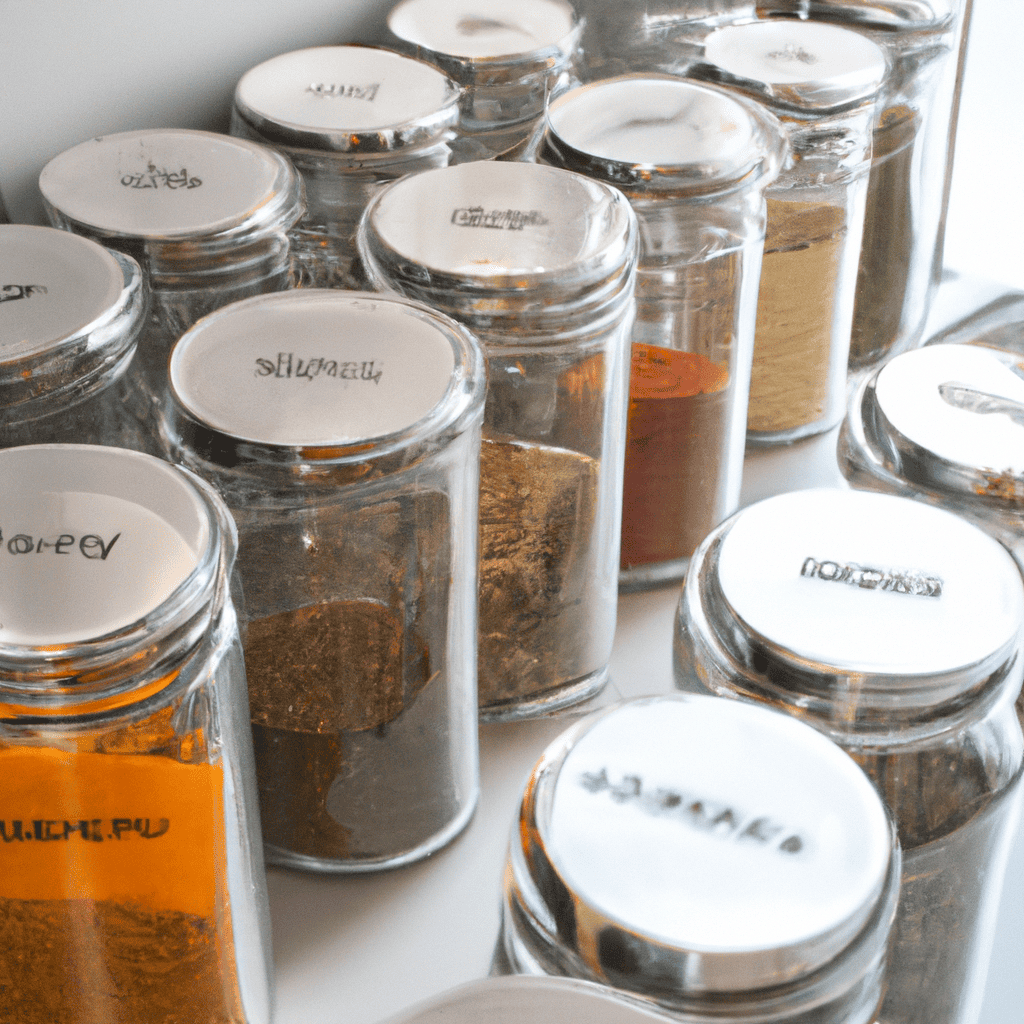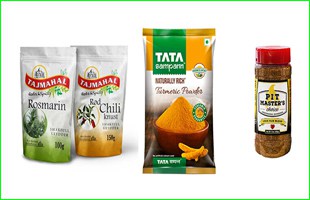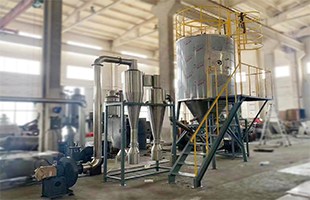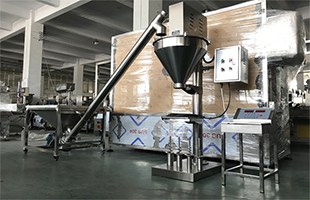Table of Contents
The Ultimate Guide How to Use a Spice Grinder

Spice grinders are a must-have kitchen tool for any home cook looking to take their cooking to the next level. Freshly grinding your spices is the best way to maximize flavor and aroma in your dishes. This comprehensive guide will teach you everything you need to know about getting the most out of your spice grinder.
What is a Spice Grinder?
A spice grinder is a kitchen appliance designed specifically for grinding herbs, spices, and other flavorful ingredients into fresh, aromatic powder. Spice grinders allow you to grind small batches of sauces as needed, so you always have access to their peak flavor, aroma, and color.
The grinding mechanism inside a spice grinder varies by model but generally uses stainless steel blades or plates to pulverize the spices. Some heroes have a manual hand crank, while others are electric.
Benefits of Using a Spice Grinder
- Enhanced flavor– Freshly ground spices have significantly more flavor and aroma than pre-ground spices, which lose their potency over time.
- Custom textures– You can control the grind’s coarseness from fine powder to coarse chunks.
- Small batches– Convenient for grinding, just the amount you need for each recipe.
- Versatility– Use it for grinding herbs, spices, seeds, nuts, coffee beans, and more.
- Value– Grinding your spices can save money compared to buying pre-ground spices.
Types of Spice Grinders
There are a few different types of spice grinders to choose from. Here’s an overview of the most common options:

Electric Blade Grinders
These are the most widely used and affordable spice grinders. They work like an electric coffee grinder with a rapidly spinning stainless steel blade that pulverizes the spices placed inside the removable bowl.
Pros: Fast, efficient, can grind large batches, easy to use.
Cons: Can overheat spices, inconsistent grind size, noisy.
Manual Grinders
Manual spice grinders have a hand crank or twisting mechanism that activates the grinding plate or burrs. Common styles are made of wood, ceramic, or metal.
Pros: Consistent grind, no electricity needed, suitable for small batches, portable.
Cons: Time-consuming to operate, harder to clean, and fragile.
Mortar and Pestle
The classic mortar and pestle have been used centuries to crush spices and herbs. The bowl-shaped mortar and club-shaped pestle are made from granite, marble, wood, or ceramic materials.
Pros: Consistent grind, preserves oils in spices, inexpensive, no electricity.
Cons: Very time-consuming, harder to clean, tiresome to use for large batches.
Spice Mill Grinders
These metal spice mills contain a regulated grinding mechanism like a pepper mill that can be adjusted to produce different grind sizes.
Pros: Consistent grind, compact size, adjustable coarseness.
Cons: Limited capacity, manual twisting required, mainly for grinding peppercorns.
Industry Spice Grinders
These spcice grinders are usually used for commercial and industry use, it can make more fine spice powder from 20-120mesh.
Pros: Big Capacity,Wide Applicationa,Work continuously.
Cons: The price is a little high
What Spices to Grind
Nearly any whole spice will benefit from fresh grinding. Here are some of the most popular herbs to grind at home, along with their essential uses and flavors:
- Cumin– earthy, nutty flavor perfect for Indian, Middle Eastern, and Mexican dishes.
- Coriander seeds– citrusy, floral flavor that brings brightness to curries and stews.
- Fennel seeds– aromatic anise-like flavor great for baked goods and sausages.
- Cinnamon sticks– a warm, distinctive, sweet spice used in desserts and fall dishes.
- Nutmeg– nutty, slightly sweet spice popular in baking and beverages like eggnog.
- Black peppercorns– an essential peppery spice that enhances nearly any savory dish.
- Cardamom pods– a sweetly pungent spice used in Indian cuisine and baking.
- Cloves– an intensely aromatic spice used in both sweet and savory cooking.
- Allspice berries– hints of cinnamon, clove, and nutmeg, perfect for baking.
- Dried chilies– range from mild to spicy heat, perfect for salsas, chili powder blends, etc.
Herbs like oregano, rosemary, and thyme also benefit from grinding just before use. You can even grind coffee beans, nuts, and seeds in most spice grinders.
How to Use a Spice Grinder
Follow these simple steps for flawlessly grinding spices:
- Add spices to the grinder.Keep the recommended capacity, as this can jam the blades or mechanism.
- Pulse the grinder 2-3 times.Let the spices rest for 15 seconds between pulses to prevent overheating.
- Shake grinder.Redistribute spices between pulses for an even grind.
- Check consistency.Pulse and shake more if needed to reach the desired texture.
- Empty into an airtight container.Store freshly ground spices away from light and moisture to preserve aroma and flavor.
Here are a few more tips for success:
- Grind spices in small 1-2 tablespoon batches. Smaller batches prevent overheating.
- Consider toasting whole spices briefly to intensify flavor before grinding.
- Clean grinders thoroughly between uses if switching between spices.
- Allow electric grinders to cool briefly between batches to prevent overheating.
- When in doubt, pulse rather than run an electric grinder continuously.
- Consider using separate grinders for coffee beans and spices to prevent flavor transfer.
Grinding Different Spices
You’ll need to adjust your technique slightly depending on the hardness and oil content of the spice.
Hard Spices
Peppercorns, allspice, and cinnamon sticks are very hard and dense. For electric grinders, use short 5-second pulses to crush them gradually. For manual grinders, apply steady pressure as you turn the crank. These complex spices can quickly dull blades if overworked.
Oily Spices
Spices like cumin, fennel, and cloves have higher oil content. Grind them in small batches to prevent the oils from gumming up the grinder. Let the hero rest a minute between sets to allow cooling if needed.
Seeds
Grind seeds like fennel, cumin, and coriander just until crushed. Be careful not to grind them into a paste. Pulse gently in short bursts.
Herbs
Herb leaves like rosemary or oregano tend to powder very quickly. Grind them in 5-10 second increments, shaking between pulses to prevent over-grinding into a paste.
Chili Peppers
It’s best to grind dried chilies in small batches – no more than two tablespoons at a time. Their oils can quickly build up heat and friction. Allow the grinder to cool completely between batches to prevent overheating.
Cleaning and Maintaining Your Spice Grinder
Proper cleaning keeps your grinder running efficiently and prevents cross-contamination of flavors.
- Wipe electric grinders down with a dry cloth after each use.
- For blade grinders, remove and wash the bowl and blade separately.
- Use a small brush to dislodge any trapped spice particles.
- Simply scrub with warm, soapy water and rinse with mortar and pestle.
- Allow all parts to dry thoroughly before reassembling.
- Deep clean the grinder every few weeks using rice as an abrasive cleaner.
- Periodically inspect blades for dullness or damage and replace them if needed.
- Store grinders in a clean, dry place out of direct sunlight.
Following these steps will keep your spice grinder running like new for years!
5 Delicious Recipes Using Freshly Ground Spices
Now that you know how to use a spice grinder like a pro, here are some fantastic recipes that highlight freshly ground spices:
- Garam Masala– This blend is the backbone of Indian cuisine. Grind cumin, coriander, cardamom, cinnamon, cloves, and black pepper together.
- Pumpkin Pie Spice– Blend cinnamon sticks, allspice berries, ground ginger, nutmeg, and cloves for fall baked goods.
- Italian Herb Blend– Mix fennel seeds, dried oregano, basil, and parsley.
- Chili Powder– For homemade tacos, blend dried arbol and ancho chiles, cumin seeds, garlic powder, and oregano.
- Lemon-Pepper Blend– Brighten fish and chicken with freshly ground black pepper, lemon zest, and dried lemon peel.
Get creative and experiment with your signature spice blends! The possibilities are endless with a spice grinder in your kitchen arsenal.
Frequently Asked Questions About How to Use a Spcie Grinder
1. What are the most significant benefits of grinding your spices?
Grinding your spices gives you access to their freshest, most intense flavor and aroma possible. Pre-ground spices quickly lose potency over time, whereas freshly ground spices add liveliness and vibrancy to any dish. You also have total control over the texture of your ground spices.
2. Is it better to get an electric or manual grinder?
Electric grinders are more efficient and convenient but can overheat spices more easily. Manual grinders give you more control over texture. For most home cooks, an electric blade grinder offers the best experience for grinding day-to-day spices.
3. How long do ground spices last compared to the whole?
Ground spices start losing their flavor within a few months, while whole spices can last 1-2 years if stored properly away from light, air, and moisture. For the freshest flavor, try to grind spices as needed.
4. What’s the maximum batch I should grind at once?
Grind spices in tiny 1-2 tablespoon batches. More significant amounts can overwork the grinder and overheat the spices. Take your time grinding in these small increments for the best results.
5. Is it safe to grind coffee beans and spices in the same grinder?
Using separate grinders is best to avoid residual coffee flavors impacting your spices. Suppose using the same hero, thoroughly clean between different uses. Some residual transfer of flavors is still likely over time.
Final Thoughts
Grinding your spices is one of the easiest ways to take your cooking to the next level at home. This guide covers everything you need to know to master your spice grinder. So equip your kitchen with high-quality spices, grab a sub, and experiment with bold new spice blends. Your tastebuds will thank you!






